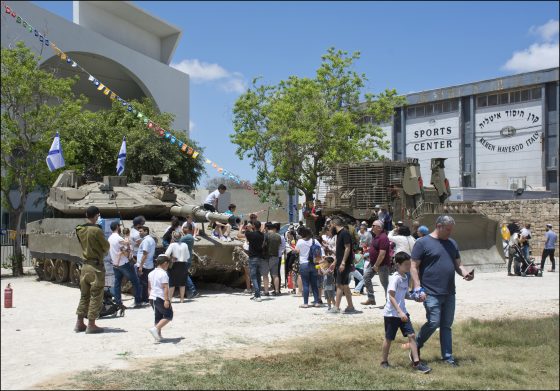BESA Center Perspectives Paper No. 1,456, February 24, 2020
EXECUTIVE SUMMARY: In light of the new defensive challenges along the confrontation lines, and particularly the growing threat of the surprise infiltration of Israeli territory by Hezbollah and Hamas forces, it is once again vital to involve the border communities in territorial defense. Defensive preparedness in these communities can provide a safety net in the event of a surprise attack and enable more appropriate and effective use of regular IDF forces in a state of emergency.
The past decade, with the civil war in Syria in particular, saw an easing of Israel’s security situation as the threat posed by the armies of the Arab states—and primarily the Syrian army—was seen to be receding. But a new set of threats has been taking shape. To the threats posed by Hezbollah and Iranian militias in the northern arena have been added threats from Hamas and Islamic Jihad in the Gaza Strip. Again Israel has to prepare for a multi-arena war.
Along with the by now familiar threat of rocket and missile fire, a new threat is emerging: in both north and south, enemy commando forces have been built for the purpose of taking over communities and IDF facilities along the borders. This threat highlights the lack of local quick-reaction forces that could defend the border communities against surprise attack, a danger that is becoming a real possibility.
Under routine conditions, apart from the special on-call contingent at almost every border community, residents are unarmed and are not organized to defend their community. The communities also lack any suitable infrastructure of defensive fortifications against an enemy mounting an organized attack.
Back in the years of Chief of Staff Rafael Eitan (1978-83), an array of protective fortifications was set up in the communities and manned by residents in the territorial-defense framework of reserve duty. As he emphasized in one of his Chief of Staff missives,
The territorial-defense communities are the local standing army. They must ensure that we stay in control and they must prevent the enemy from disrupting our systems in case of war. Very vital, then, are: their tactical location on the ground, their possession of up-to-date weapons, the training of their residents for their task, and the proper fortification of these communities.
This mode of organization in the border communities dwindled over time, mainly because the IDF and national leaderships stopped believing in it. However, under the new conditions that have emerged, with the increasing chances of a surprise attack, the border communities need an immediate defensive solution.
The solution proposed today suffers from two fundamental problems:
- Deploying standing army forces to protect border communities depends on an intelligence warning that will not necessarily be received in time, resulting in a time lag between the enemy attack and the arrival of the forces.
- Deploying standing army elite forces for defensive purposes makes them less available for required offensive operations in enemy territory.
As Yigal Allon said of these two basic problems: “Without territorial defense, which is based mainly on settlement, the army would have to allocate considerable forces to defensive functions. The IDF, which is smaller than the Arab armies that surround Israel, cannot allow a weakening of its offensive force.”
Today, notwithstanding the legacy of the past, not only are border communities no longer incorporated into the defensive effort, but the defense establishment is planning to evacuate them in time of emergency as part of an overall plan for evacuating citizens from the confrontation lines on the northern border and in the Gaza envelope.
Veteran members of the communities are complaining about the intention to clear them out rather than mobilize and organize them to defend their homes, and it is worth heeding their point. They can and should be mobilized as reserve soldiers to protect their communities. Even people over the age of seventy, be they men or women—especially when they are local—can be effective in defensive roles when operating from stationary positions. This of course requires not only an effort to organize and rearm these residents but a renewal of the pioneering frontier ethos.
In light of the new defensive challenges along the confrontation lines, and particularly the growing threat of surprise infiltration of Israeli territory by Hezbollah and Hamas forces, it is once again vital to involve the border communities in territorial defense. Defensive preparedness in these communities can provide a safety net in the event of a surprise attack and enable more appropriate and effective use of regular IDF forces in a state of emergency.
This is an edited version of an article published in the January issue of The Liberal.
Maj. Gen. (res.) Gershon Hacohen is a senior research fellow at the Begin-Sadat Center for Strategic Studies. He served in the IDF for 42 years. He commanded troops in battles with Egypt and Syria. He was formerly a corps commander and commander of the IDF Military Colleges.


